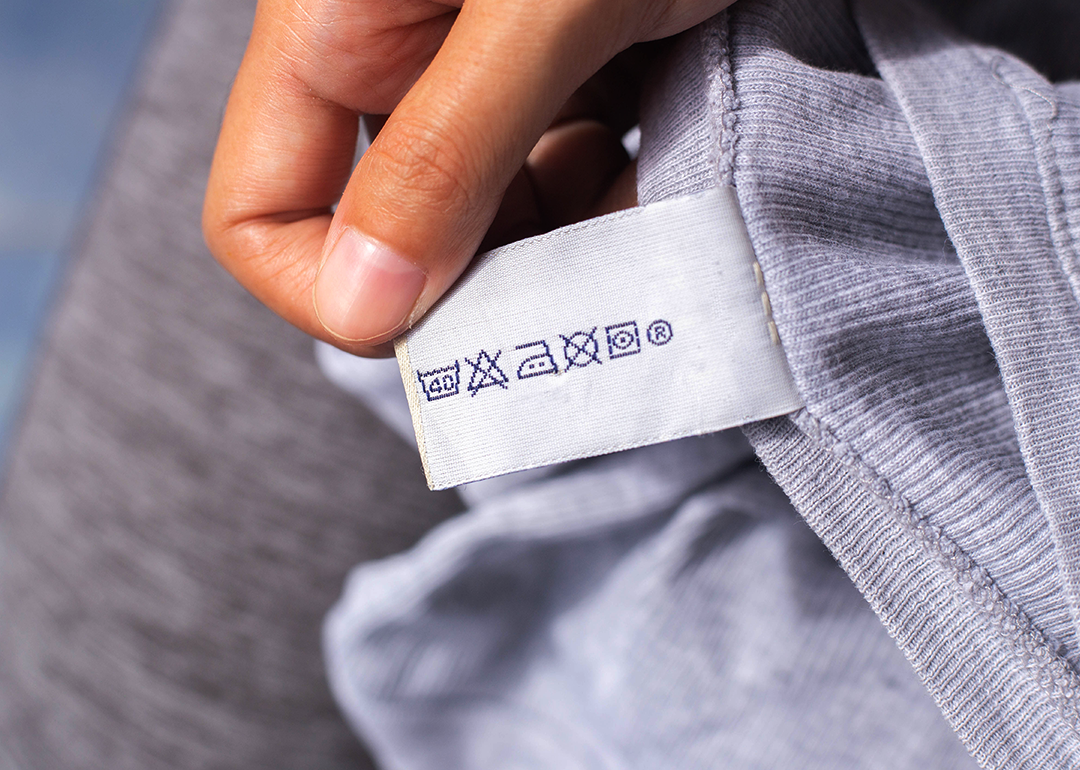
Hot, cold, or hand-wash? Here's what those laundry symbols on your clothing tags really mean.
This story originally appeared on HeySunday and was produced and distributed in partnership with Stacker Studio.
Hot, cold, or hand-wash? Here's what those laundry symbols on your clothing tags really mean.
For many, washing clothes means throwing things in the washer and dryer, turning the machine to a neutral setting, and calling it a day. It's not hard to understand why. Most care labels—those teeny, tiny tags usually attached to the designer label or sewn into the garment—can look like hieroglyphics. The labels can also irritate the wearer and are consequently removed, never to be seen again. Unless it's a particularly special garment, most people never pay attention to these tags. But shouldn't we?
Despite being a constantly ignored detail of our clothing, the care label only dates back to 1950s, when numerous organizations used it on an ad-hoc basis to identify their work. Back then, most clothes were made of natural fibers and only needed either a hot wash or a wash in cooler water for clothes that tended to run. When synthetic fibers became more widely available in the 1960s, confusion ensued, and no one could determine how best to clean their clothes.
Enter the International Association for Textile Care Labelling, or GINETEX, headquartered in Paris and established in 1963 by a few European countries, including Switzerland, France, Belgium, the Netherlands, and Luxembourg. The group codified the markings and registered them as trademarks.
With this international standard as the foundation, countries like the United Kingdom and the United States eventually followed. The former had the Home Laundering Consultative Council and the British Standards Institution. The latter had the Federal Trade Commission, which enacted the Care Labeling Rule of 1971, which still influences how we wash our clothes today.
HeySunday consulted garment care resources to decode those confusing laundry symbols and determine the rules for laundry and garment maintenance. Those tiny tags may seem like one of life's nuisances, but they're actually there to help protect the things in your life that have value, whether it be a wedding dress, a blazer you wore on a spectacular job you landed, or the last pair of gloves your loved one used. Read on to finally understand the basics of garment care.
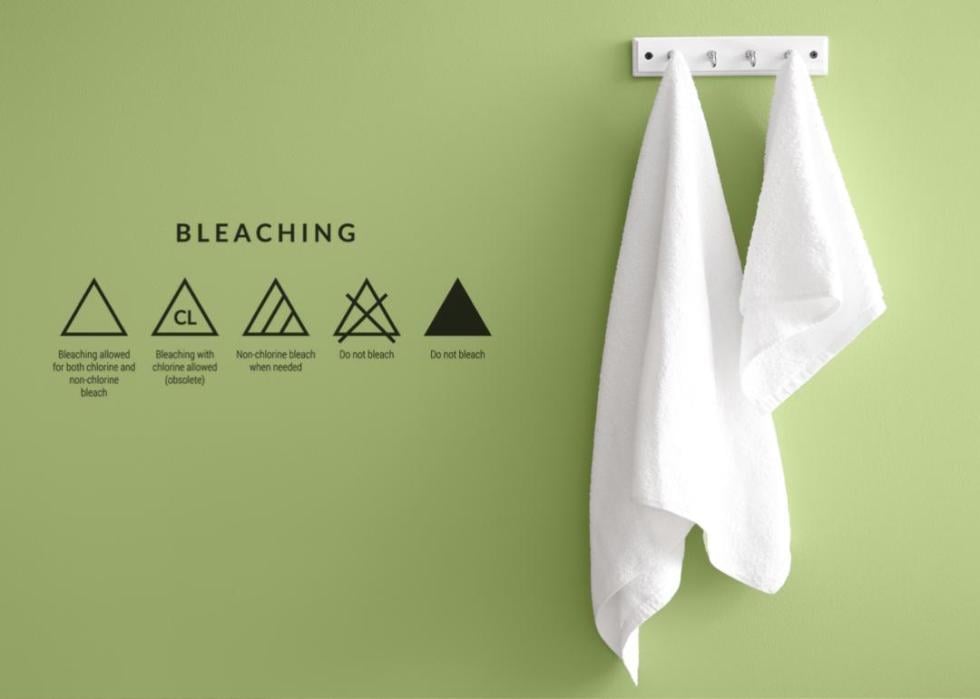
Bleaching
Using bleach has always been controversial, especially considering its environmental toll. Though there are greener alternatives (that may produce less stellar results), it continues to be part of many people's laundering habits to keep those whites pearly white. There are just three triangular symbols you need to know to keep your garment as safe as possible.
A triangle with an "x" means do not bleach. A lone triangle indicates bleach as needed. A triangle with lines on the inside means you should only use nonchlorine bleach if you decide to bleach.
There are two types of bleach: chlorine and nonchlorine. There is a lot of science behind the two; just remember that nonchlorine, or peroxide, bleach is color-safe and can be used on virtually any machine washable fabric. Chlorine bleach, though it technically does not contain any chlorine inside the bottle, is safe for fabrics like cotton, polyester, and acrylic fibers. Keep bleach away from wool, silk, mohair, or leather.
Testing will be your friend. If you are unsure which to use on your expensive Paris market-bought vintage blouse, try a small test area in an inconspicuous place (perhaps on the inside seam) to see how the fabric reacts.
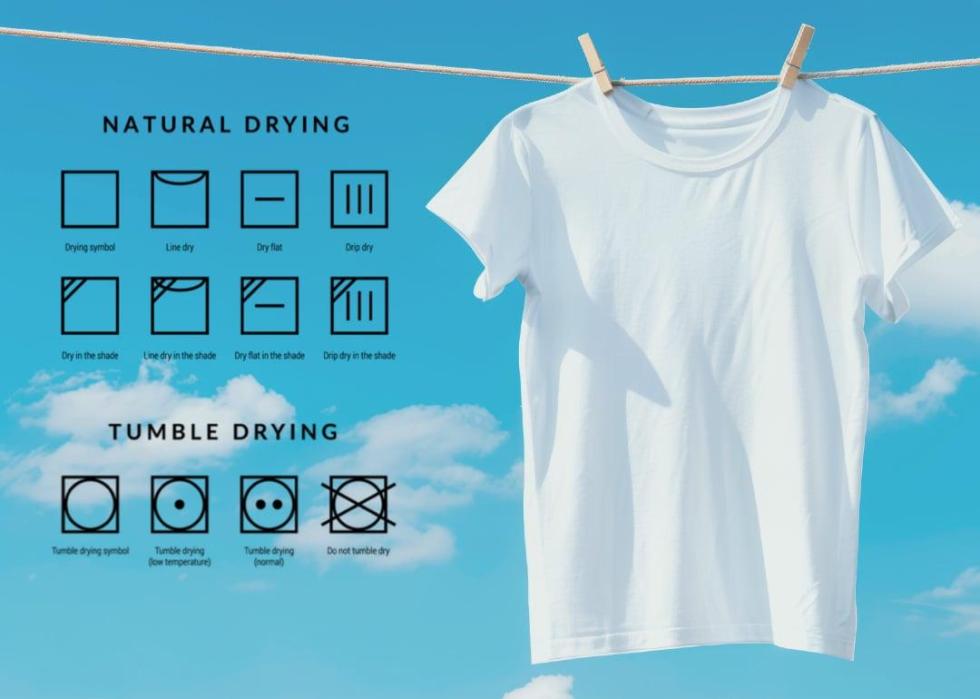
Drying
After washing comes drying: the light at the end of this domestic tunnel. Like any other stage, it has its nuances. Again, returning to your care label for reference, drying instructions can easily be identified by the square that may or may not contain a circle.
The three most common methods of drying will most likely be familiar. Tumble dry is indicated with a circle inside a square. Permanent press uses the same symbol as tumble dry but with one line underneath. Gentle cycle also uses the same symbol but has two lines underneath. Low, medium, and high heat is indicated by the number of dots inside, just like in washing. The more dots, the higher the temperature.
The difference between a good ol' tumble dry and a permanent press depends on fabric composition and temperature. Garments chemically treated to reduce wrinkles, or that have pleats, for instance, should be dried on the permanent press setting. Clothing made from synthetic fibers will also do well under a permanent press setting. This is due to the dryer being a bit more gentle on the clothes, reducing the heat used so the fibers don't distort, become overly dry, or twist out of shape.
Some garments require even more attention in the drying phase, and there are symbols for those instances too. Lines in the upper left-hand corner of a box mean to dry in the shade. One horizontal line inside a box means to dry flat, a common way of drying knits so they don't stretch out of shape. If a garment needs to drip dry, look for a box with three vertical lines inside. For an old-fashioned line dry, look for a box with a curved line that makes the symbol look like an envelope.

Washing
Washing is indicated by the symbol that looks like a cup, basin, or "tub." When it comes to machine washing, your options are machine wash (the tub symbol with a curvy line to indicate water), permanent press (the same symbol as machine wash but with an underline), and gentle cycle (the same symbol as permanent press but with two lines underlining the symbol rather than just one).
The dots inside that tub symbol indicate how cold the water should be. One dot means it should be washed cold, two dots mean wash warm, and three dots mean wash hot.
But cold, warm, or hot can be so subjective. Some tags will be extra helpful and include numbers to indicate the desired water temperature. Respectively, 30, 40, or 50 degrees Celsius means cold, warm, and hot.
If a tag has a tub drawn with a hand inside, please hand-wash. Handwashing is straightforward. Simply, soak and scrub your garment in water with your preferred cleaning agent. Take it out, rinse it in fresh water until clean, and then lay it out or hang it to dry. Lay your clothes on a clean towel if they need additional support to keep their shape, like knitwear.
A symbol that looks like a wrapped piece of candy with a huge "x" over it means do not wring the garment. If the garment is not made to be washed at all—and most likely dry-cleaned—the tub will have a huge "x" over the symbol.
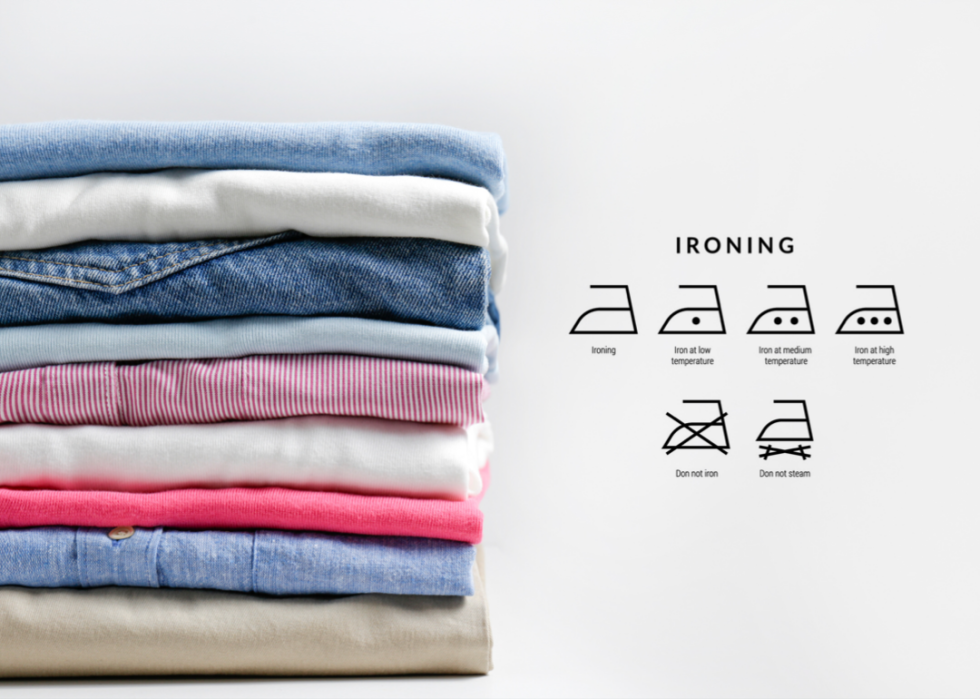
Ironing
In the rarified air of high fashion, haute couture, or Savile Row, ironing, or pressing and sponging, is seen as an essential skill. Having a skilled operator use the ingredients of gravity, steam, wood blotters, and time to mold fabric into its final shape before wearing gives a garment life.
Items that need ironing have a tag with a simple illustration of an iron with a top handle. Again, the dot scale to indicate heat level is used here. The more dots, the hotter the iron. An iron symbol with an "x" means do not iron.
As for steaming, the breath of life for cloth, an iron symbol with tiny dots flaring out underneath means steam as needed. The same symbol, but with an "x" overtop, means do not steam.
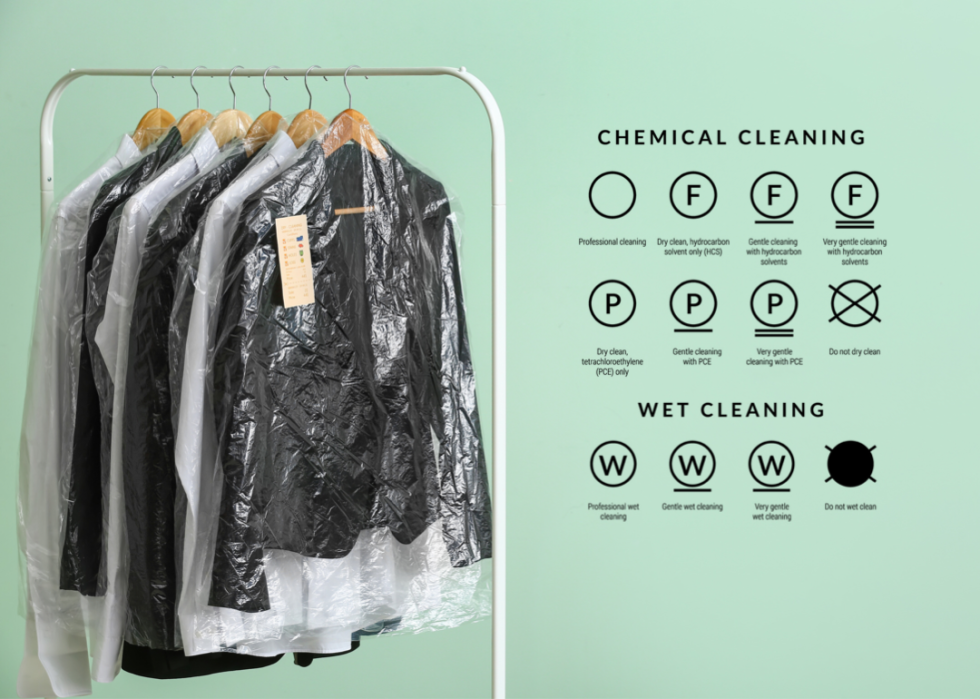
Professional care
Some garments need even more attention, resources, and specialist care, thus requiring professional services like dry cleaners. These could be garments with exquisite and complicated yet fragile embroidery, clothing made of unusual fabrics and materials, or vintage pieces. Some items are so delicate they can require a completely different strategy for cleaning and upkeep.
If your garment needs professional oversight, the tag will have a simple circle. Just the circle is the green light to dry clean. A circle with an "x" over it means do not dry clean.
Try to find a reputable dry cleaner that understands clothing; some very prestigious ones have the skills to care for special pieces. In cities like New York and Los Angeles, there are dry cleaners used to working with top fashion designers and celebrity stylists for the red carpet.
With these institutions, you can arrange to mail in your garments and speak about your situation over the phone with staff, have a strategy devised and implemented, and have the garment sent back to you. There are, of course, local services that are reputable as well. For your garment's sake, do take the time to research.
Story editing by Carren Jao. Additional editing by Kelly Glass. Copy editing by Paris Close.



